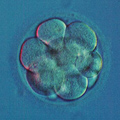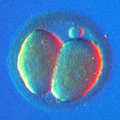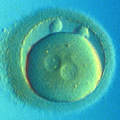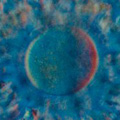PGD Reliability
It is often stated that the most common causes for PGD misdiagnosis are outdated PGD technologies, embryo mosaicism, and embryo self-correction.
Outdated Technology
Being in the PGD field since its inception we would like to comment on the "outdated" part. Each new technology becomes "standard technology" after a few years of successful use by its inventors. At this point, it attracts attention of the people not necessarily qualified for its use, especially if training and certification programs have not been set up. If the number of the so-called "in-house PGD labs" outweigh the output from the "Reference Laboratories" the results become quite dramatic. A few years back rates of 40-50% misdiagnosis were reported by some PGD practitioners. This was followed by Prospective Randomized Studies reporting shockingly low pregnancy rates from the use of FISH technology for PGD. Luckily for the concept of PGD, those who actually developed PGD technologies, have come up with new PGD procedures and there is hope that the cycle will not repeat itself.
Mosaicism
The presence of cells in an embryo which have different genotypes is called Mosaicism. Some newborns with Down's Syndrome are actually mosaics, they have both normal and aneuploid cells. By analyzing a few hundred or a few thousand cells it is possible to determine the level of mosaicism in a specific tissue. Not so with PGD! Analysis of a single cell tells us nothing about embryo mosaicism, and if the embryo is actually a mosaic, then PGD results become misleading.
Self-Correction
Another rare genetic phenomenon is Self-Correction. The proof of concept comes from the unusual genetic condition called uniparental disomy when an embryo has two copies of a chromosome from one parent and no copies from the other parent. The most reasonable explanation for this odd condition is "self-correction." Take Angelman Syndrome as an example. Suppose originally an embryo has a trisomy for chromosome 15, having 2 chromosomes 15 from the mother, and one from the father. Through self-correction the embryo extrudes one extra chromosome, the one inherited from the father. Although the embryo is left with the normal karyotype, both remaining chromosomes 15 come from the mother. This results in a baby with Angelman Syndrome. Proponents of "self-correction" go one step further. They hypothesize that aneuploid preimplantation embryos actively correct their chromosomal abnormalities. We do not know how they explain restoration of euploidy by the embryos with chromosomal monosomy.
Embryo mosaicism is a well established fact of preimplantation human development. Luckily for the concept of PGD, it affects almost exclusively the embryos of suboptimal quality, which rarely progress to the blastocyst stage. At ViaGene we do follow-up analysis for blastocysts found aneuploid by PGD. This is why we called "self-correction" a myth. The results obtained in our laboratory contradict the hypothesis.
We believe that 99% of "mosaicism" and "self-correction" explanations/excuses stem from the fact that PGD laboratories mark all "no results" or "inconclusive PGD results" as "abnormal." This is one of the rules coming from the early nineties when PGD was done exclusively for single-gene disorder cases. The policy of "not proven normal means abnormal" makes perfect sense for, say, Cystic Fibrosis or chromosomal translocation carriers. However, when applied to aneuploidy testing, such approach leads to unacceptably high rates of false-positive results.
At present our OGS method for 24-chromosome aneuploidy screening is confidently below 2% of false-positives level. Needless to say, we have never had a false negative (abnormal embryo marked as normal) PGD result. Our goal is to have the level of false-positive PGD results at zero. The main reason for our concern with false-positive results is that the patients who need aneuploidy testing the most, those in the 38-44 age group, have only one or two genetically normal (euploid) embryos for transfer. To select these embryos out because of the high false-positive rate means taking the couple's only chance of having a baby.
Other causes for misdiagnosis include unavoidable technical limitations of different PGD techniques. Improper blastomere fixation for FISH and OGS, allele drop-out (ADO) for single-gene disorders, preferential amplification during WGA and sample contamination with extragenous DNA (ranging from polar bodies to dead sperm heads to airborn DNA) for Microarray-based PGD are just a few examples. Paraphrasing the saying of the leading biologist of our generation: "however many ways there may be of being alive, it is certain that there are vastly more ways of being dead" we say: "there is an infinite number of ways of doing PGD wrong!"
In general, PGD carries with it an approximately 1% chance for misdiagnosis, though at ViaGene, we are proud to say that in 10 years with have had zero occurrences of misdiagnosis, out of thousands of embryos analyzed. When considering PGD as an integral part of IVF cycle, each couple should weigh potential benefits and risks of the procedure and decide for themselves.






